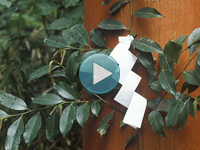
/ Captions and accompanying text edited by Sherry Poirrier, Imaging Center Curator and Project Manager, and Kirsten Eichholz, Research Assistant, from documentation provided by David Boggett.
Kamo Saiin purification ritual at Shimogamo Shrine. The Kamo Saiin, dressed in elaborate Heian style costume, makes her way to the edge of the Mitarashi Shrine pond within the Shimogamo Shrine precincts to begin the ceremonies. The Saio was originally a virgin Imperial princess, sent to officiate at shrine ceremonies. The first Saio was appointed to serve at Ise Jingu, the head shrine to the Sun Goddess. During the Heian period, a Saio was also appointed to the Kamo Shrines, commonly known as the Kamo Saiin. It is believed that the institution of the Kamo Saiin fell into disuse at the end of the Heian era. Now, probably in order to add color to the Aoi Festival and thereby promote it as a tourist event, a representative of the Saio is chosen annually from among the daughters of Kyoto’s leading families.
Saiin attendants in procession at Shimogamo Shrine. In an event preparatory to the main festival, the chosen representative of the Saio (saiodairi), accompanied by numerous attendants in court attire, is purified, the location alternating between Shimogamo and Kamigamo Shrines each year. The festival is, therefore, a re-imagined event, memorializing the purification rite of the Kamo Saio (Saiin) that allegedly took place during the Heian era in the Kamo River. The addition of the Saio Representative to the Aoi Festival occurred after the war, probably starting in the 1970s.
Mikage Shrine decorations. During the Mikage Festival, Shimogamo priests visit the small Mikage Shrine, at the base of Mount Hiei, to escort the deities from their living mountain abode to the Shimogamo Shrine precincts for the Aoi Festival. Shrine priests, attendants and Shinto musicians, dressed in Heian court costumes, assemble at Mikage Shrine, which is decorated with colorful cloth banners, paper lanterns decorated with aoi motifs, and aoi (hollyhock) branches ornamented with folded zigzag strips of white paper known as shide.
Bugaku Performance at Akanomiya Shrine. Midway between Mikage and Shimogamo Shrines, the Mikage Festival’s procession calls at Akanomiya Shrine. A Bugaku dance performance, accompanied by a Gagaku orchestra, is held in the center of the courtyard. Literally meaning “the Red Shrine,” Akanomiya’s connection to Shimogamo was doubtless due to the local reddish clay that was used for the production of ceremonial vessels for the Shrine food offerings.
Procession enters Kawai Shrine through the Torii gates. After leaving Akanomiya Shrine, the procession travels through the city arriving at Kawai Shrine, a sub-shrine of Shimogamo just within the shrine precincts. The procession of performers, musicians, and priests passes through the two Torii gates of Kawai Shrine.
Enshrined kami transported on white horse in procession to Kawai Shrine. Formerly many of the participating dignitaries arrived on horseback and the deities were transported on a white horse to Shimogamo’s Kawai Shrine. Postwar modernization has rendered this impractical and the participants now travel in several minibuses and the deities are transported on the back of a small decorated pick-up truck to Kawai Shrine. Only for the last part of the event, the solemn procession from Kawai Shrine through the Tadasu-no-mori forest to the main precincts of Shimogamo Shrine, is the deity transported on the back of a white horse.
Azuma Asobi Bugaku performance in forest clearing. Halfway between Kawai and Shimogamo Shrine’s main buildings, among the woods and streams of the Tadasu-no-mori forest, the procession pauses for an elegant performance of an Azuma Asobi Bugaku dance, accompanied by Gagaku music. The kami, enshrined on the white horse, are enclosed in a colorful banner-draped pavilion.

















